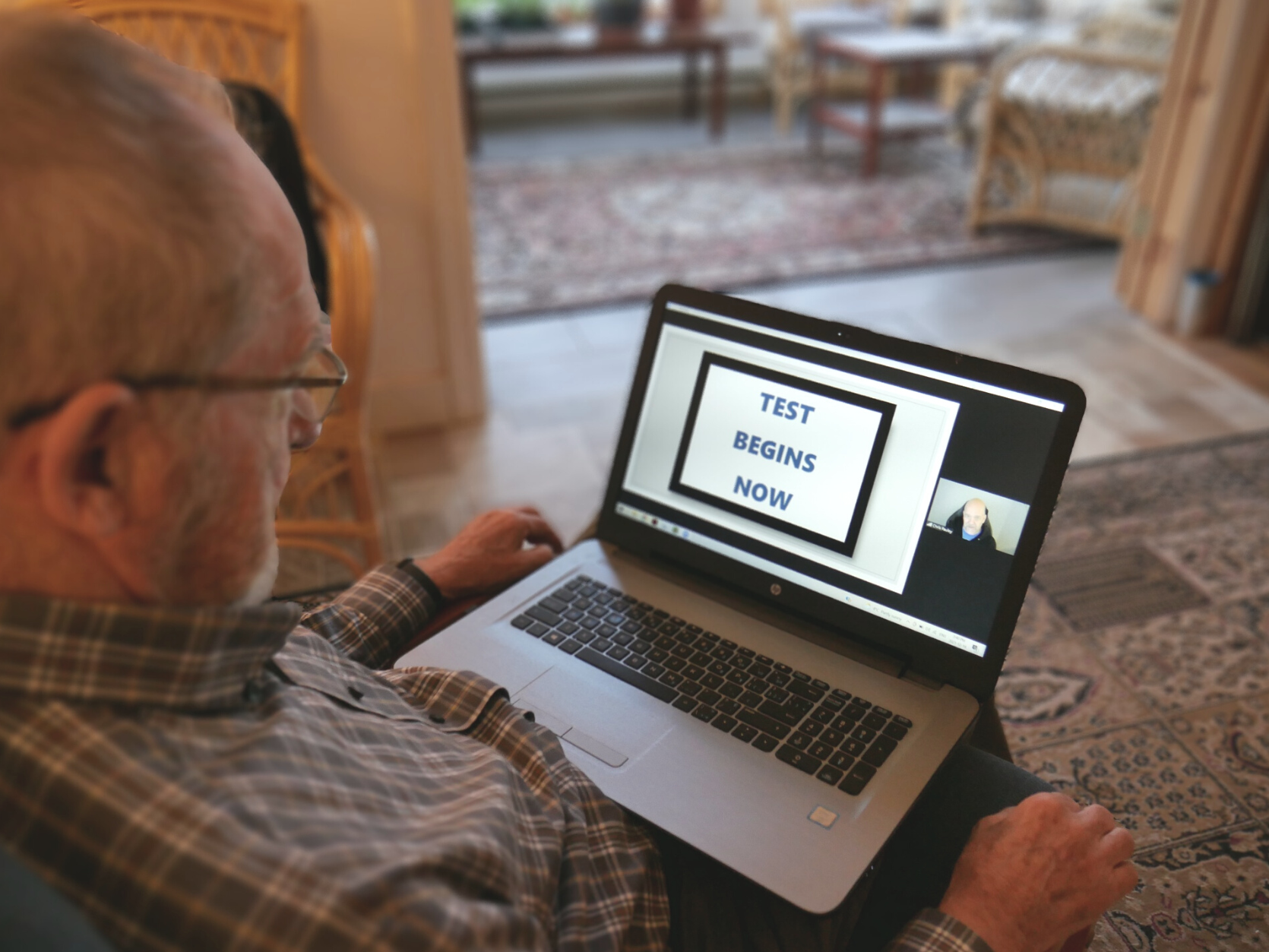
SYNERGIC@Home
SYNchronizing Exercises and Remedies in GaIt and Cognition
Background
SYNERGIC@Home is a double-blind, randomized study. The study aims to learn if an entirely online interactive physical and cognitive (brain) exercise program can be successfully delivered to older adults in their homes across New Brunswick.
Why?
Previous studies have shown that health conditions like high cholesterol, high blood pressure, and heart disease don’t just affect our body’s health; they also put us at a higher risk of developing Alzheimer’s or dementia-related diseases. The good news is that we can prevent or delay the onset of dementia by making daily lifestyle changes, like increased physical exercise, eating healthier and sleeping better.
As a small, primarily rural province, older adults in New Brunswick may experience challenges and barriers to accessing healthcare services and wellness programs. With that in mind, the SYNERGIC@Home study is an opportunity to test the feasibility of providing virtual in-home physical and cognitive training similar to the training.
What is a double-blind, randomized intervention study?
In a blind study, participants do not know which treatment (intervention) they receive. For example, during a blind study for headache medicine, participants might not know if they are in the group receiving the test medication or the group receiving sugar pills (placebos).
In a double-blind study, the participants and certain research team members are not told which group participants are assigned. All participant-identifying information is removed from the data to prevent accidentally “unblinding” a participant or team member.
For SYNGERGIC@Home, participants and team members directly involved in the study – physicians and research coordinators – did not know which of the four groups participants were assigned.
Blind studies are important because they help reduce bias during the study that could affect the results.
How did you select your participants?
Between late October 2021 to early-May 2022, NB-PALM study coordinators met with interested participants by phone and Zoom and asked them to complete a pre-screening questionnaire. A study physician reviewed the questionnaire to determine if a participant met the study’s eligibility criteria.
What happened during the study?
The study had multiple phases, but below is a breakdown of the major phases involving participants: Pre-screening and enrollment, Screening, Baseline assessments, intervention, and post-intervention assessments.
Phase 1: Pre-screening and enrollment
Following a pre-screening meeting, eligible and interested participants met with a clinical research coordinator for an in-depth discussion about the study and the participant’s role before deciding if they wished to enroll. At that time a consent form was completed.
Phase 2: Screening
After completing initial assessments over Zoom, participants met with their research coordinator and one of the study physicians. Together, the group reviewed the assessment results and medical history, to determine if the participant was eligible and could safely proceed with the interventions in the study.
Phase 3: Baseline Assessments
Over the course of three to four weeks, the participant completed approximately 60 physical and cognitive tests, including memory recall, diet, sleep, and exercise habits.
Phase 4: Intervention
Participants were assigned randomly to one of four groups, each with its own cognitive and physical training plan, and partnered with a CESPT-CPT certified trainer to guide their virtual intervention sessions.
For sixteen weeks, participants completed 90-minute combined physical and cognitive training sessions, three times a week, scheduled by the participant and the trainer. A typical session included 15 minutes of warm-up exercises followed by 30 minutes of planned exercises and a 15-minute cooldown, and 30 minutes of cognitive activities or lessons on the computer. The participant’s heart rate and blood pressure were recorded at the start and end of each session.
Phase 5: Post-Intervention Assessments
After completing their 16-week intervention, participants repeated the same baseline assessments. Participants then went about their normal routines for six months before repeating the baseline assessments a final time.
Phase 6: Data Analysis
The research team analyses the data collected. These include both quantitative data as well as qualitative data.
Phase 7: Final Reporting and Distribution
The study’s data and findings are shared as widely as possible. Data and findings of completed sub-studies are also shared at this time.
Study Timeline
Pre-study Approval Process
Participant Recruitment and Enrollment
Participant Screening and Baseline Testing
Intervention Period
Post-Intervention Assessments
Data Preparation and Analysis
Final Reporting and Sharing Results
Check back soon for more updates!
Click below to check out more of our published work and interviews on this study.








